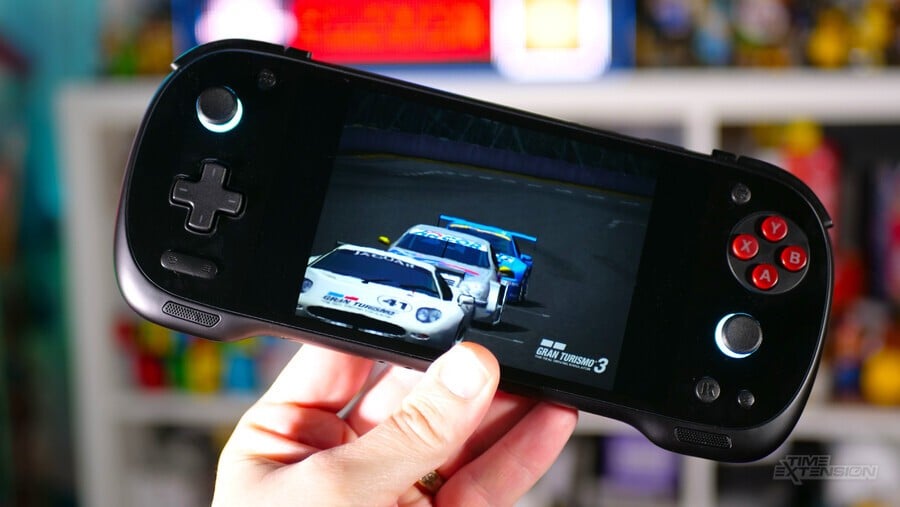
Not content to hit consumers with a new wave of emulation handhelds on a yearly basis, Chinese firm AYANEO has now established a sub-brand called KONKR which is focused on budget-friendly devices – which means we'll be seeing even more devices from the company over the next few years.
The first product in this family, the Pocket Fit, is notable for offering a Snapdragon G3 Gen 3 chipset (or Snapdragon 8 Elite, depending on your budget) and a starting price of $239, making it a little friendlier on your wallet than some of AYANEO's previous offerings.
Does going budget mean a drop in quality, though? I guess we'll establish that by the end of this review...
KONKR Pocket Fit Review: Design
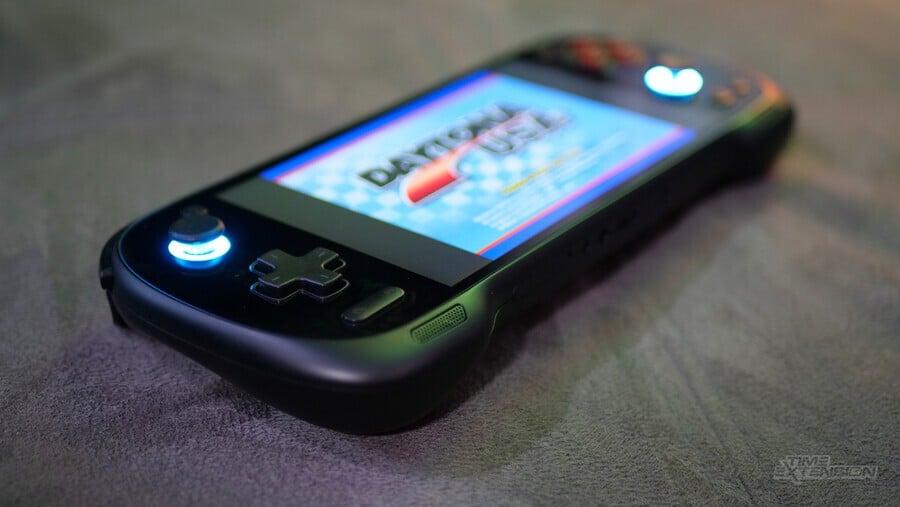
The first thing that came to mind when I picked up the KONKR Pocket Fit was the AYANEO Pocket Air, another Android-based device released by the company in 2023.
Like that handheld, the Pocket Fit has nice rounded edges and ergonomic grips on the back, making it feel a little more comfortable than the AYANEO Pocket S and Pocket S2.
The dual analogue sticks are Hall Effect variants and come with fancy customisable LED lighting, which is all the rage with kids these days, so I'm told. The sticks feel nice enough and are positioned well, but they're a little on the small side, which might be off-putting for some players. If you're used to the Switch's sticks, these are even smaller.
The D-pad is positioned below the left-hand analogue stick, which is usually a red flag for me ,as I mainly play 8 and 16-bit games on emulation handhelds. However, in AYANEO (or should that be KONKR's?) defence, the pad is still easy to reach with your thumb as it's still quite 'central' on the face of the device. It's also an excellent pad to boot; I had no trouble playing Street Fighter with it.
Also, as we'll come to shortly, this is a handheld that I'll probably use more for PS2, GameCube and Dreamcast emulation, so the analogue stick placement makes a lot of sense – even for a diehard 2D fan like myself.
In terms of the buttons, the layout here will be instantly familiar to anyone who has used an AYANEO handheld in the past. You've got the four face buttons – A, B, X and Y – as well as two digital shoulder buttons and two analogue shoulder triggers.
In the case of the latter, these have trigger locks so you can switch between an instant, digital-style hair trigger or full analogue – so, if you're playing a game which requires quick input, like a first-person shooter, then you'll want the former, but games that need proportional control (like racing titles) will want the latter. Also on the back of the device, you'll find two programmable buttons that rest just beneath your fingertips.
Back on the front, there's a dedicated 'KONKR' button, which does the same thing as the AYANEO button on the company's other handhelds and launches a quick menu that allows you to change things like system performance profiles, button arrangements and even toggle on the performance overlay, allowing you to see what FPS you're getting.
The device's top edge has the volume rocker and power button (there's no fingerprint scanner this time around), while the bottom edge has the USB-C port, 3.5mm headphone jack, and MicroSD slot.
In all honesty, if you didn't know it, you wouldn't instantly brand the Pocket Fit as a 'budget' handheld based purely on its build quality; in fact, this looks and feels just as good as the Pocket Air, AYANEO Air 1S and Pocket DMG handhelds. The only members of the AYANEO family that deliver a more premium impression are the Pocket S and Pocket S2 devices.
KONKR Pocket Fit Review: Display & Software

One area where AYANEO has spared expense with the KONKR Pocket Fit is the screen, which is an LCD panel rather than an OLED one.
Having said that, the 6-inch, 1080p screen used here is very good, even if it's not quite as punchy and bold as the OLED options seen on other devices, like the Odin 3.
The Pocket Fit also offers a 144Hz refresh rate, which is better than the 120Hz OLED screen seen on the aforementioned Odin 3.
While many Android games are capped at 120Hz, it's nice to have the option to go a little bit beyond that.
In terms of software, the Pocket Air is running Android with AYANEO's UI sitting on top. While many manfacturers have tried their hand at created bespoke, gamer-focused OS skins for Android, AYANEO has arguably done the best job so far.
The AYASPACE / AYA HOME launcher allows you to control virtually every aspect of the device, right down to fan speed and overall processing power, and you can also do cool stuff like map the physical controls to on-screen buttons for games that don't come with controller support.
KONKR Pocket Fit Review: Performance & Battery Life
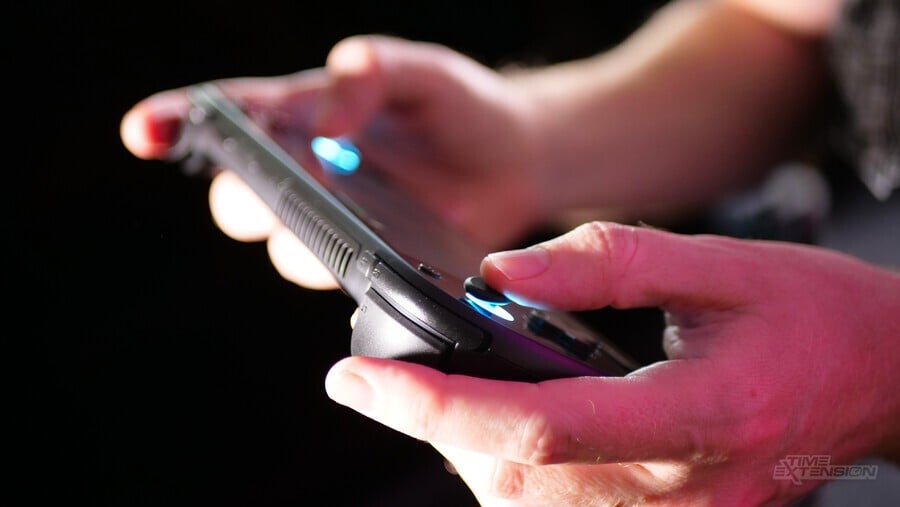
The base models of the KONKR Pocket Fit are powered by Qualcomm's Snapdragon G3 Gen 3 chipset, which means you're getting pretty robust performance, even when compared to premium options from the last few years. In fact, even the much-hyped AYANEO Pocket DS is rocking weaker internal hardware – it's running the Gen 2 version of the same chip.
The sample I was supplied with by AYANEO is the 12GB RAM / 256GB storage model.
Right out of the box, I loaded up the PS2 emulator NetherSX2 and doubled the internal resolution. The performance on all of the games I tried was faultless, even when running the KONKR Pocket Fit in its default 'Balanced' performance profile. Titles like Ridge Racer V, Gran Turismo 3: A-Spec and Rygar: The Legendary Adventure all worked flawlessly.
Next up, I tried the Dolphin emulator, which handles GameCube and Wii emulation. Again, I was able to double the internal resolution and play games without any noticeable performance issues.
Naturally, any systems older than PS2 and GameCube also run perfectly, including Sega Saturn, which often causes problems on these kinds of devices due to its complex architecture.
If you're looking to play native Android games, then you're in for a treat; the Pocket Fit has the raw processing power to run all of the most graphically demanding games on the Google Play Store without breaking a sweat.
Naturally, all of this power comes with a price. If you're running high-level emulation on a daily basis, the 8000mAh battery is going to drain pretty quickly. After a couple of days of mixed usage – some PS2 / GameCube / Dreamcast emulation, some 16-bit emulation, Android gaming and a lot of downloading – we managed to get around three to four hours out of a single charge, with the screen brightness and volume not quite at maximum.
It's worth noting that the Pocket Fit Elite edition offers even more power thanks to its Snapdragon 8 Elite chipset, but I wasn't able to test that model during this review period. That model starts at $269.
KONKR Pocket Fit Review: Specifications
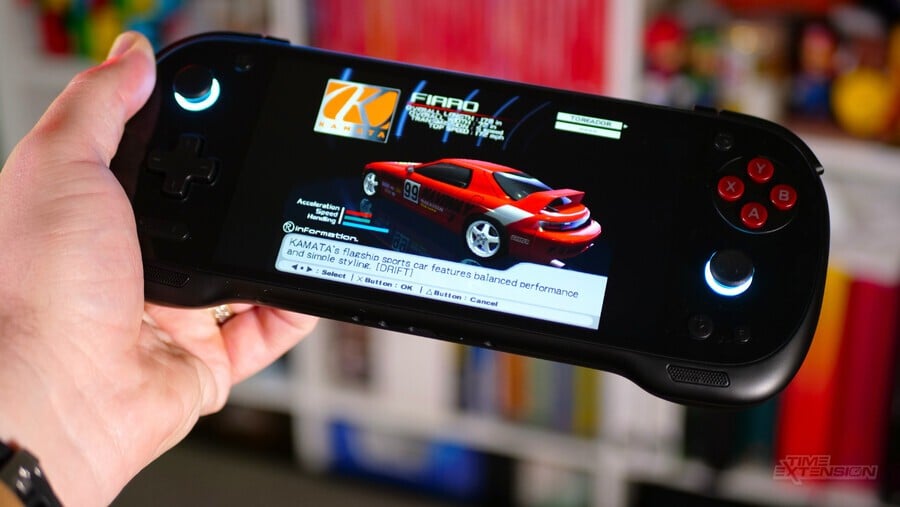
The KONKR Pocket fit is available in four different configurations, with the following pricing being the "Super Early Bird" values, unless otherwise stated:
- 8GB + 128GB - $239
- 12GB + 256GB - $299 (This is the model used in this review)
- 16GB + 512GB - £349
- 16GB + 1TB - $399
The Snapdragon 8 Elite-powered model, known as the KONKR Pocket Fit Elite, is available in the following configurations:
- 8GB + 128GB - $269
- 12GB + 256GB - $339
- 16GB + 512GB - £389
- 23GB + 1TB - $499
| CPU | Snapdragon G3 Gen 3 |
| GPU | Adreno A32 |
| RAM / Storage options |
|
| Weight | 386g |
| Size | 225 x 88.9 x 17mm |
| Screen | 6-inch 1920 x 1080 144hz LCD |
| OS | Android 16 |
| Battery | 8000mAh with PD fast charge |
| Connectivity |
|
| Analogue Stick Type | Hall Effect |
| Vibration | Dual X-Axis linear motors |
| Interfaces |
|
KONKR Pocket Fit Review: Conclusion
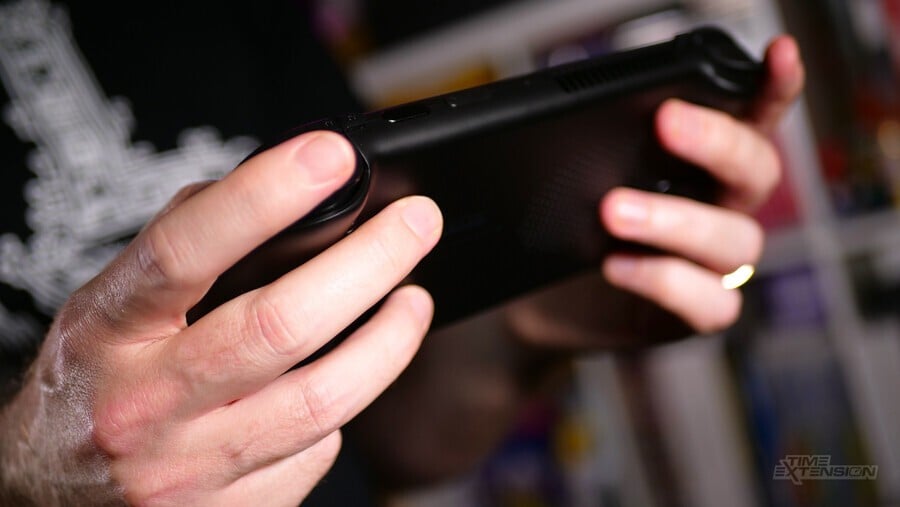
While AYANEO has been keen to position the KONKR Pocket Fit as a budget-level proposition, I found that it offers a premium experience in terms of raw power and is capable of running PS2 and GameCube games at full speed with a resolution boost, making it one of the most appealing options on the market when it comes to this kind of high-level emulation.
In fact, what really struck me about this device – and the Snapdragon G3 Gen 3 chip which powers it – is how effortless it is to get things running. Normally, when you're talking about high-level emulation, a moderate amount of tinkering is required to get optimal performance. With the G3 Gen 3, things just work out of the box, which bodes well for the future of handheld emulation. If you have the cash to opt for the Snapdragon 8 Elite model, then you're looking at even more power in your pocket.
The catch is that AYANEO has serious competition in this field via the Odin 3, which has an OLED display and runs the Snapdragon 8 Elite chipset as standard. However, the Odin 3 is more expensive, with its base model costing $329 – that's $100 more than the entry-level 8GB RAM / 128GB storage Pocket Fit.
Which option is the right one for you largely depends on what you're going to be using this device for, but both are likely to be solid choices if you're seeking to explore the world of PS2-era emulation with the minimum of effort.
The KONKR Pocket Fit is currently available on IndieGoGo.
